Navigating Your Way Through an Asphalt Shingle Roof Replacement
December , 2023 | 9 min. read
By Joe Martinez
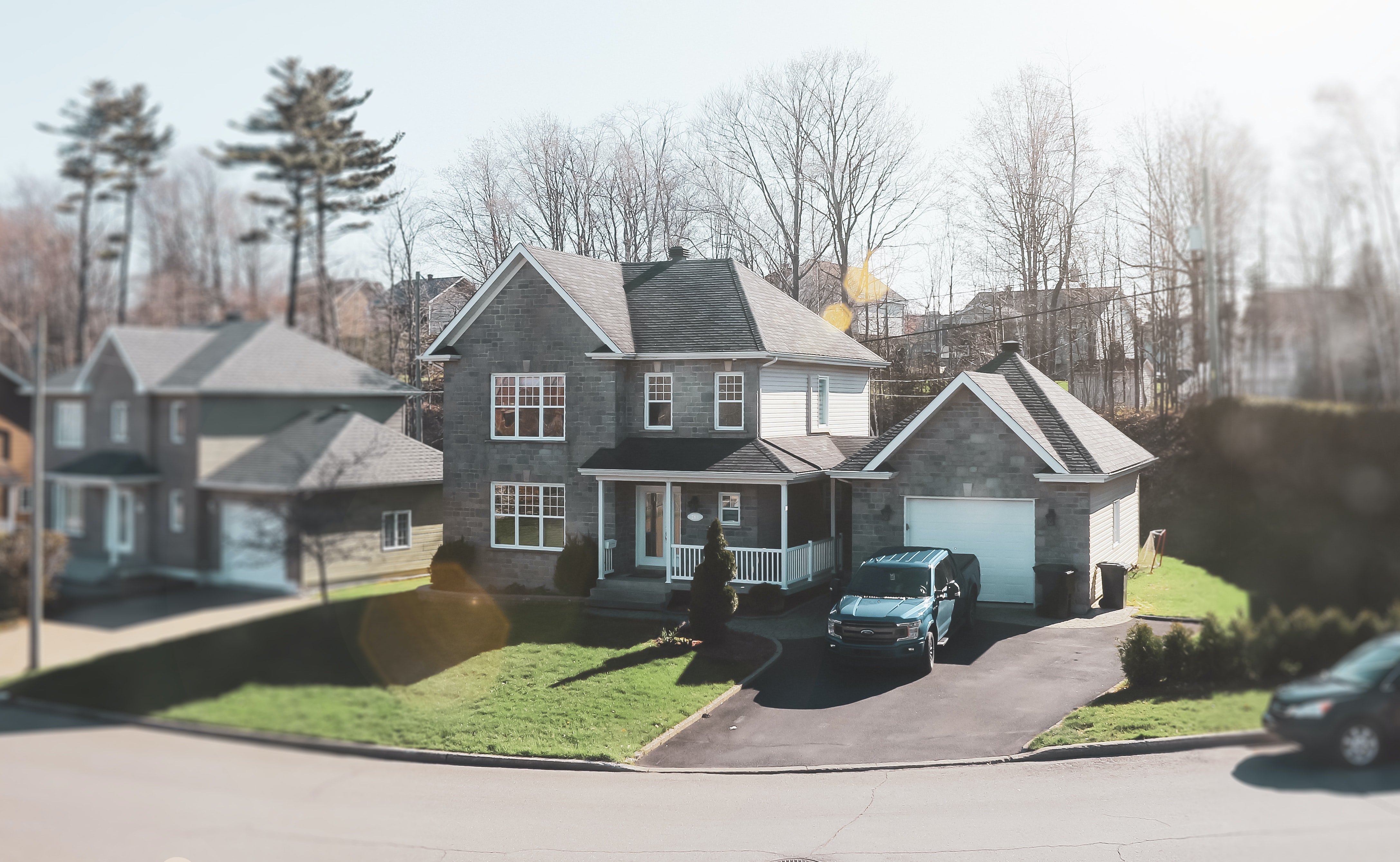
It’s safe to assume that no homeowner is happy to hear they need a complete roof replacement. I mean, where’s the fun in that?
It’s not rewarding the same way getting your kitchen renovated is, or even painting your bedrooms, We get it! But sometimes it’s necessary. Every homeowner will be told they need their roof replaced at some point or another.
A beautiful new shingle roof can be rewarding though. The reason most people refuse to believe so is because of the stress surrounding roof replacements, and fear of the unknown. Where do you start? What all needs to be replaced? Is this going to cost me an arm and a leg?
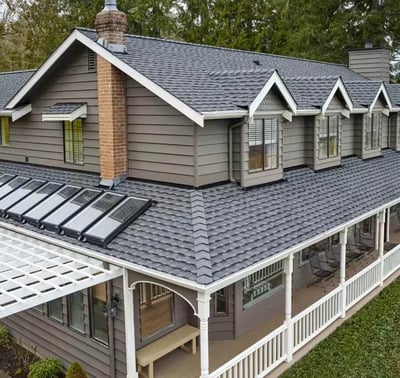
At RoofCrafters, we understand your concerns. We’ve been replacing roofs for 3 decades, so we’ve heard a thing or two about the qualms surrounding roof replacements. With all of this experience under our belts, we also have the knowledge to help homeowners gain the peace of mind that roof replacements aren’t so bad after all.
If you’re reading this article, you’re probably considering having your roof replaced soon. Maybe you have some anxiety because you’re unsure of what the entire process entails. Rest assured that you’re in the right place because, in this article, you’ll learn about all of the components and steps that will be included in your shingle roof replacement. Let’s jump right in!
Breaking Down the Shingle Roof Replacement Process
We won't downplay it; a lot goes into having your shingle roof replaced. When you opt for a complete roof replacement, every component of your roof gets completely replaced. It’s a far different process from a roof overlay. Which involves laying a new layer of shingles on top of your old shingles.
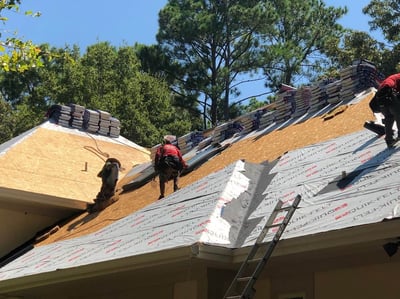
When you decide on a full roof replacement, it means that every part of your roof is going to be renewed. This isn't just about swapping out old shingles for new ones; it's a complete renovation from the top down. We’ll explain how the process works, beginning with the initial tear-off.
The Initial Step: Roof Tear-Off
When the time comes for a roof replacement, your contractor will first conduct a roof tear-off. During the tear-off, your contractor will methodically work across your roof, section by section. Tearing off your old roof is a much better option than going over your old roof with newer materials.
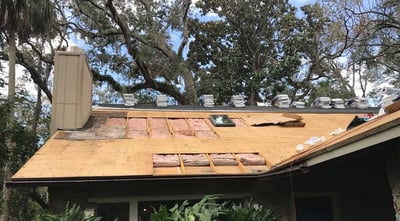
This careful approach is vital for a few reasons:
- Uncovering Hidden Damage: The removal of old shingles often reveals underlying issues. Such as water damage, wood rot, or structural weaknesses that might have been concealed under the shingles.
- Ensuring a Clean Slate: By stripping away the old materials, your contractor can start afresh. Which is essential for the longevity and effectiveness of your new roof.
- Inspection and Assessment: Your contractor can conduct a thorough inspection of the roof's decking and framework. This step is important to address any repairs that may be needed before installing the new roofing materials.
- Adding Value: If you’re thinking about selling your home any time soon, a brand-new roof can add to your home’s resale value. Roofs are major selling points, making full roof replacements an excellent option.
Ensuring Structural Integrity: Decking Inspection
What is roof decking? And why it’s there? The decking of your roof is like armor for the rest of your home. It adds structural support. It's a critical component of your roof. Your roof can't exist without decking!
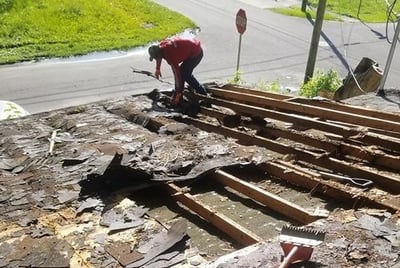
Decking consists of flat boards that are attached to the trusses or rafters. Think of these as the skeletal system of your roof. Every skeleton needs its muscle tissues and skin, right? Gross, but yes. In the same manner, the skeletal-like deck provides a surface for your shingles to thrive and do their job. They provide support for the underlayment and other materials to be attached.
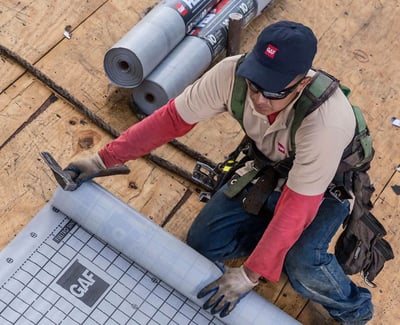
As you can see, the decking is pretty important. Hence the reason its inspection is such a big part of the roof replacement process. Any damages, even minor ones will affect the structural integrity of your entire roof. It’s extremely important the decking is in great condition and can withstand a new roof. If it’s rotted, damaged, or compromised in any way, your contractor should advise you to replace it.
Laying the Foundation: Underlayment, Drip Edge, and Flashing Installation
Once the decking has a passing inspection, it's time to get started on installing the underlayment, drip edge, and all the flashing needed. It goes a little something like this:
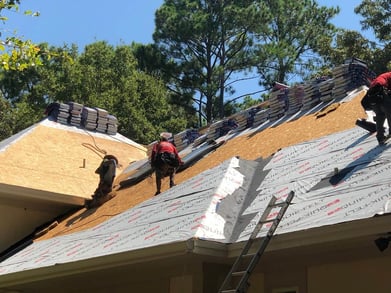
Underlayment: The underlayment is an important layer that is placed in between the decking and the shingles. This component acts as a waterproof layer for your plywood and is attached directly to the roof deck. The underlayment is your new roof’s raincoat.
Drip Edge: The drip edge is a piece of metal that is installed around the perimeter of your roof edge. The drip edge directs rainwater away from your roof and facia boards. It keeps water from entering between the shingles and the structure. The drip edge is your roof's facia shield.
Flashing: The flashing, like the drip edge, is a metal component that is used to direct water away from the vulnerable areas of the roof. Areas like skylights or chimneys. The flashing is your new roof's stormwater system.
Final Touches: Shingles and Vents Installation
Now, it’s finally time for the fun part: your shingles are ready to be placed! After the old roof is torn off, your decking is inspected, and your underlayment, drip edge, and flashing are installed, your new roof materials will be delivered and your contractor will begin to install your new roof system.
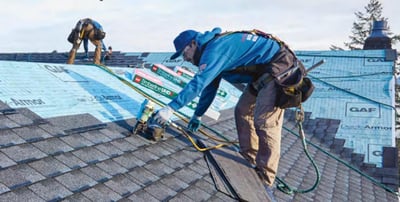
The shingles will be installed section by section with all the roofing components that make up the entire roof system being installed in their correct order. During this process, your roofing ventilation system will also be installed.
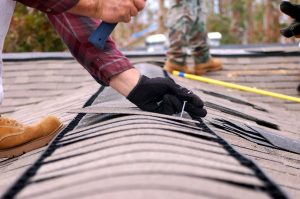
While your roof must be water-tight, you don’t want it to be air-tight. Your attic will need to be able to breathe just like you and me! And it inhales through your soffits and exhales through your roof vent.
Some of the different options of ventilation systems available to you include:
- Ridge vents: These types of vents are installed on the peak of a roof. They help to provide continuous and uniform exhaust ventilation at the highest portion of the attic and are designed to help resist heavy and wind-driven rain.
- Off-ridge vents: Off-ridge vents are not only UV-resistant, but they’re a static system as well. This type of system is suitable for installation on sloped roofs.
- Gable vents: Gable vents are usually installed on the exterior wall of your attic, and unlike the other venting systems, they’re meant to be seen. They add an architectural element to your home and create the proper air circulation needed.
- Mechanical vents: As the example of the whirlybird that was mentioned above, mechanical vents use the power of the wind to help remove excess heat and moisture from your attic.
Your contractor will help you to decide which type of ventilation system is ultimately going to be best for you and your home.
Post-Installation Clean-Up: Ensuring a Tidy Finish
After your new roof is installed your contractor will start the final clean-up. They'll begin by cleaning all the debris from the new roof and gutters. Once the roof and gutters are spotless, they'll clean the ground. You can expect this to take an hour or so. Depending on the size of your home.

The crew will remove all the tarps and pick up all the roofing debris from around your home and in your landscaping. Once all the debris is removed the crew will run magnets to pick up the loose nails around the perimeter of your home. This usually needs to be done 3 or 4 times to make sure all of the metal scraps and nails have been removed from your property.
Ready for Your Roof Replacement Journey?
Armed with this knowledge you're now well-prepared to embark on your home improvement project. Understanding the five key steps. From the initial tear-off to the final cleanup. While it may not be as exciting as choosing new furniture, the peace of mind and security a new roof provides are invaluable.
Finding the Right Roofing Contractor
Now that you’re a guru on all-things-shingle-roof-replacement, you should be feeling pretty comfortable and confident with your upcoming project.
If you’re just starting, you’re probably getting ready to find and hire a local roofing contractor. To locate a great local roofing contractor that’s the best fit for you, RoofCrafters has provided a checklist of questions to ask your local roofing contractor, along with the right answers that you need to get back when you meet with these roofing contractors.
If you are in the South Carolina, Georgia, or Florida area, schedule your inspection below to begin your roof replacement journey. If you’d like to learn more about your roof replacement, we recommend you read, "How Much Does a New Roof Cost?" so that you can be better educated on the costs associated with your soon-to-be new roof.
At RoofCrafters, our mission is to provide job opportunities for others to thrive and grow while making a meaningful impact within our communities.




